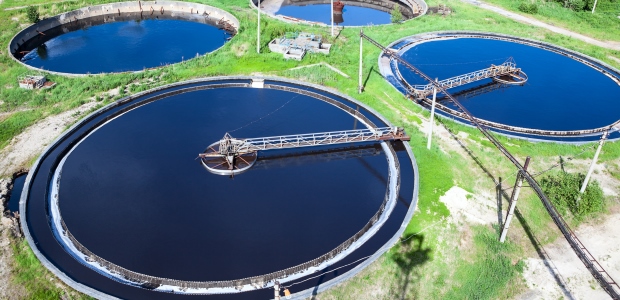
RTO Technology Reduces Operating Costs
The Stony Brook Regional Sewerage Authority (SBRSA) in Princeton, NJ provides treatment and disposal services for wastewater residuals. Their River Road Wastewater Treatment Plant was constructed in 1976 and began taking flow in 1978. The plant receives flow from Princeton Borough and Township, South Brunswick Township, and West Windsor Township.
- By Greg Thompson
- Apr 07, 2014
The Stony Brook Regional Sewerage Authority (SBRSA) in Princeton, NJ provides treatment and disposal services for wastewater residuals. Their River Road Wastewater Treatment Plant was constructed in 1976 and began taking flow in 1978. The plant receives flow from Princeton Borough and Township, South Brunswick Township, and West Windsor Township.
Sludge is generated as part of the wastewater treatment process. The sludge is de-watered and then incinerated in one or two multiple hearth incinerators. The sewage sludge incineration (SSI) process is continuous and averages approximately 6.0 wet tons per hour, operating 6 days per week and 52 weeks per year.
To control odors and carbon monoxide (CO) at SBRSA, the exhaust from the incinerator was originally conveyed to a direct fired afterburner system, before passing through a wet venturi scrubber for removal of coarse particles. The Authority recognized that approximately 50 percent of the natural gas used in the incineration process was consumed by the direct fired afterburner. This became the focus of the Authority’s initiative to reduce operating costs.
SBRSA consulted Chavond-Barry Engineering (CBE) in Blawenburg, NJ, a local engineering firm with years of experience on multiple hearth incinerators and Sewage Sludge Incineration. After extensive review of the process, CBE recommended a Regenerative Thermal Oxidizer (RTO) to obtain the greatest reduction in operating costs.
CBE recommended Dürr Systems of Plymouth, Michigan, based on their successes at similar facilities in Wayne, NJ and Fitchburg, MA. High thermal efficiency, high destruction efficiency and a proven track record were some of the reasons used to formulate CBE’s equipment and supplier recommendation.
In addition to Durr’s experience in the industry, CBE specified Dürr’s Ecopure RL RTO system for the added benefit of the single rotary valve that allows for high destruction efficiency, low system maintenance as well as the compact footprint offered by the skid-mounted design.
The skid mounting offers the advantages of pre-piping and wiring of the RTO to an integral control room thus saving cost and time during installation. A final consideration was the advantage of an online bakeout feature that allows the reduction of particulate on the heat recovery beds while continuing to operate at full production volume.
The project included the addition of a Wet Electrostatic Precipitator (WESP) for a total system install cost of $4.9 million. Since going online with the Durr RL RTO, SBRSA has realized an average monthly savings in natural gas usage of 49 percent that equates to over $2,500,000 thus far in energy cost savings. The return on investment for the entire project stands at just under 3.5 years.
“The reduction in incineration operating costs has been a significant factor in the Authority’s ability to keep operating costs and annual budgets stable during a time when member municipalities are under significant economic stress” states Courtney Bixby, Assistant Manager of Engineering at the Plant. “Keeping in line with the Authority’s vision, our carbon footprint has been reduced considerably as well as our impact on the environment.”
RTO System Details
Risk was greatly reduced by employing an RTO technology that was previously proven in difficult situations where odor and CO destruction were critical project objectives. The Ecopure design features a single rotary diverter valve, twelve heat recovery chambers enclosed in a single tower, and a pre-piped, pre-wired, skid-mounted package. The single rotary valve is resistant to particulate and condensables while few moving parts reduce maintenance and improve system uptime.
The RL features a continuous purge which makes it particularly well-suited for any performance emission reduction application. An RTO without a purge feature will “puff” untreated emissions which can be detected locally. Rotary valve RTO’s eliminate the “puffing” which occurs during valve switching, a common problem with conventional regenerative thermal oxidizers.
“The Durr RL has been very well received by the operators of the plant” states Mr. Bixby. “It has been dependable and easy to operate”
In Compliance with Revised EPA Emissions Standards
The emissions from sewage sludge incinerators are regulated in part by the United States Environmental Protection Agency (USEPA), Section 129 of the Clean Air Act. These revised standards for both new and existing incinerators were published in 2011 and all operating sewage sludge incinerators are required to be in compliance with these standards by March 21, 2016.
“Potentially, as the upgrade bills accumulate, many sewage sludge incinerators may have to be in compliance with the considerably lower emission standards for new incinerators” suggests Mr. Louis T. Barry, P.E., president of CBE.
Along with the revised emission standards for existing incinerators this regulation also requires existing incinerators to meet the stricter emissions standards of new incinerators, should their accumulated system upgrades reach 50 percent of the initial install cost for the facility, adjusted to current dollars.
“The addition of the RTO and WESP has put us in a better position to meet those standards” claims Mr. Bixby.
About the Author
Greg Thompson is a marketing associate for Clean Technology Systems at Dürr Systems, Inc.